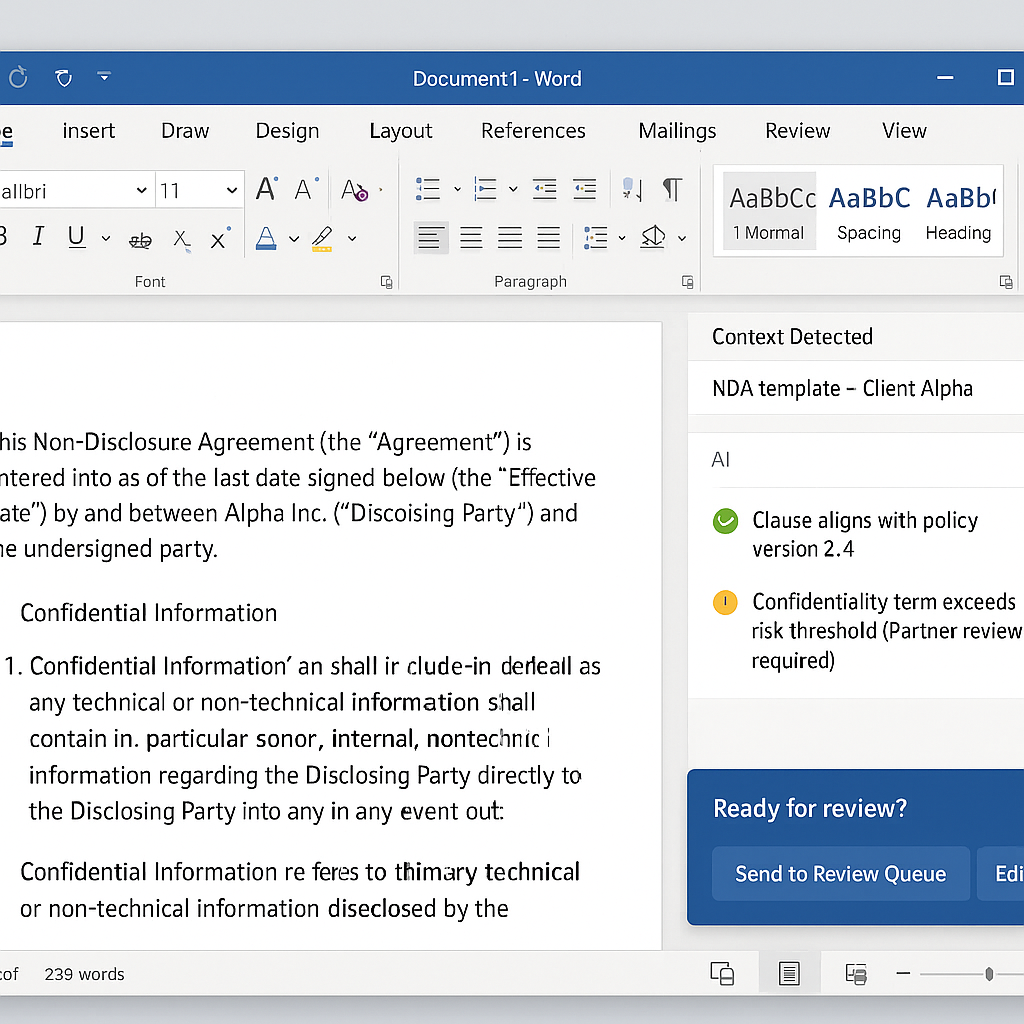From Tabs to Triggers: The Next Phase of Legal Technology

Most lawyers still think in tabs. One for email. One for documents. One for deal management. Open, click, upload, repeat.
Even for me, and I’m not a lawyer, the number of point solutions I move between each day in a firm is mind-boggling. One for tasks, another (4 or more) for files, another couple for communication. Each one claims to simplify, yet together they drain focus and fragment the day.
It’s funny in a way. I’ve spent years arguing with vendors that the user experience across legal systems is terrible. Half of them look like development stopped when that green Windows XP hill was still the default wallpaper. Now AI turns that on its head. It removes the interface altogether.
That pattern is already breaking down. Agentic systems are quietly dismantling the old idea of using software. They don’t wait for you to open an app. They live inside what you already use, linking small everyday actions into a chain of invisible processes.
From Tabs to Triggers
The lawyer of tomorrow won’t need to launch a system to start a task. They will just act. Write a clause, approve a request, send a note to a client. Those actions become triggers that pass data to an orchestration layer working behind the scenes.
A local agent embedded at the operating system level might notice you are working on a document linked to a specific client code. It connects to a cloud agent that checks deal terms, version history, and templates. When you finish drafting, it doesn’t stop there. It asks, “Ready for review?”
You won’t pick who reviews it. The agent already knows the scope, the risk profile, and the client’s requirements. It routes the draft automatically, maybe into a peer queue, maybe straight to a partner, depending on thresholds set in policy.

This isn’t far away. It’s where frameworks like LangGraph and AgentKit and products such as Flank and Autologyx are already heading towards: reasoning layers that stay running in the background rather than waiting for a click.
Systems That Stay, Interfaces That Fade
The underlying systems are not going anywhere. Document automation and document management systems for example, remain the backbone of legal work. The technical and compliance demands around version control, retention, and secure storage cannot be replaced by a few SharePoint folders with some AI sprinkled on top.
What will change is the way people interact with those systems.
Proactive AI will surface what matters inside the tools where the work already happens. Word, Outlook, Teams, or a browser. When a clause breaches policy, you will see it immediately. When a final version is missing, you will get a quiet prompt in context. The orchestration layer will handle the filing, linking, and audit trail.
The core systems will still take care of structure and storage, they just will not keep demanding attention.
On-Device Intelligence and Trust
Legal AI will need to balance privacy, latency, and governance. That is why we will see a layered design: local agents handling sensitive actions on the device, and cloud orchestrators coordinating across workflows.
An on-device agent might check citations, validate client IDs, or flag confidential terms without sending anything outside the machine. The cloud layer then updates status, alerts reviewers, or syncs results with the document system.
This hybrid setup offers both control and reach. Data remains under local oversight, but orchestration happens at scale. It is also easier to defend. Every action can be logged, traced, and attributed without relying on endless manual clicks.
From Control to Confidence
Legal software was built for control. You opened an app, selected what to do, and managed each stage yourself. Agentic systems change that relationship completely. They are built for confidence. The goal is to do the right thing automatically, within defined limits, and under governance that can be reviewed.
That principle feels familiar. It’s the same way I think about leading a team. I can’t possibly check everything they do. I understand their strengths, the importance of the work, and when it needs escalation. Trust is earned through consistent performance, clear boundaries, and mutual understanding.
Agentic systems are no different. They need rules, context, and a feedback loop. Confidence doesn’t come from seeing every move. It comes from knowing the logic and people behind it are solid.
Governance will need to adapt. Firms will define policies that determine when agents act independently, when they pause, and when a human needs to intervene. It’s less about flipping a switch and more about tuning a dial, the same principle I wrote about earlier this week. Autonomy shouldn’t be absolute; it should be adjustable, based on the risk of the task and the confidence in the system.
The real challenge is not technical capability, it is institutional authority.
A New Way to Work
Most legal workflows still rely on people as the interface. Copying clauses, saving drafts, pushing tasks from one system to another. Agentic orchestration replaces that entirely. The system takes on the operational work, while the lawyer focuses on judgment.
Information routes itself to the right place. Dashboards stay current without anyone touching them. Workflows run quietly in the background, surfacing only what genuinely needs a decision.
Once people experience that level of calm efficiency, the thought of juggling half a dozen systems for a single task will seem ridiculous.
The future of legal tech is not another dashboard or app or whatever. It is orchestration running quietly beneath the tools you already use, allowing the heavy systems underneath to fade into the background.
The question is not whether agents can act, it is whether firms will define the rules, logging, and oversight needed to trust them when they do.